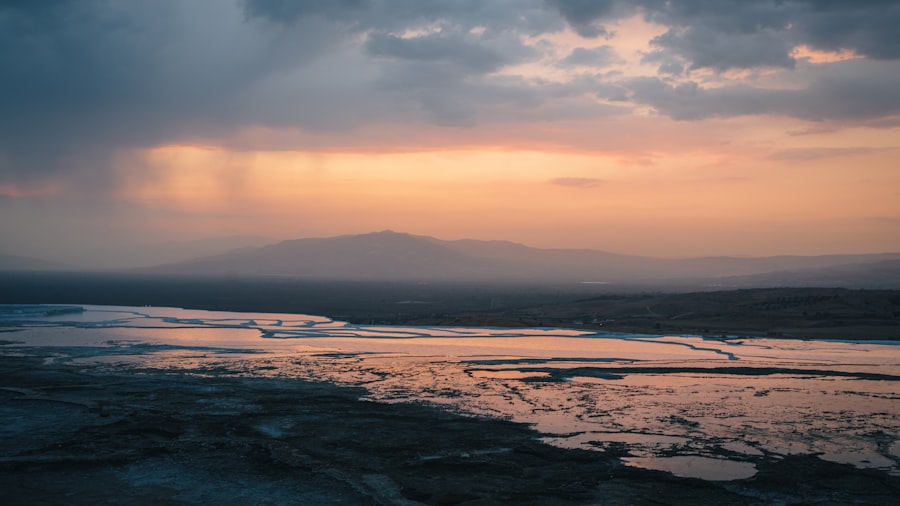Download links
How to install The Mysterious Chocolate Hills: A Natural Wonder APK?
1. Tap the downloaded The Mysterious Chocolate Hills: A Natural Wonder APK file.
2. Touch install.
3. Follow the steps on the screen.
Description
The Chocolate Hills, a geological wonder located in the Bohol province of the Philippines, are a striking natural formation that has captivated both scientists and tourists alike. These hills, numbering over 1,200, rise dramatically from the surrounding landscape, creating a surreal panorama that resembles a sea of chocolate mounds. The formation of these hills is attributed to a combination of geological processes, primarily limestone erosion and the effects of weathering.
The region is characterized by its limestone bedrock, which has been shaped over millennia by the forces of nature. Rainwater, rich in carbonic acid, seeps into the ground and gradually dissolves the limestone, leading to the creation of sinkholes and other karst features. As the limestone erodes, the landscape transforms, resulting in the distinctive conical shapes that define the Chocolate Hills.
This process is further enhanced by the region’s tropical climate, which brings heavy rainfall during certain seasons. The hills are covered in lush grass that turns brown during the dry season, giving them their chocolate-like appearance. This seasonal transformation is a key aspect of their allure, as visitors flock to witness the hills’ changing hues throughout the year.
The unique geological history of the Chocolate Hills not only contributes to their aesthetic appeal but also provides valuable insights into the Earth’s geological past, making them a subject of interest for geologists and environmentalists.
Key Takeaways
- The Chocolate Hills were formed by the uplift of coral deposits and the action of erosion over millions of years.
- The unique characteristics of the Chocolate Hills include their conical shape, which turns brown during the dry season, resembling chocolate kisses.
- Local legends and myths surrounding the Chocolate Hills include a story of two giants throwing rocks at each other, creating the hills in the process.
- The flora and fauna of the Chocolate Hills include a variety of plant and animal species, some of which are endemic to the area.
- The Chocolate Hills are important to the local community for tourism and as a source of livelihood, and efforts are being made to conserve and protect them for future generations.
The Unique Characteristics of the Chocolate Hills
Composition and Erosion
The hills are primarily composed of limestone, a sedimentary rock formed from the accumulation of marine organisms over millions of years. This composition contributes to their unique appearance and susceptibility to erosion.
Geographical Distribution and Landscape
While often thought of as a singular entity, the Chocolate Hills actually comprise a vast area spanning approximately 50 square kilometers. The hills are scattered across a landscape that includes valleys and flatlands, creating a dramatic contrast that enhances their visual impact. Additionally, the Chocolate Hills are surrounded by lush vegetation, which not only adds to their beauty but also supports a diverse ecosystem.
A Dynamic Landscape
The interplay between the hills and their environment creates a dynamic landscape that changes with the seasons, offering visitors a unique experience at different times of the year.
The Local Legends and Myths Surrounding the Chocolate Hills

The Chocolate Hills are steeped in local folklore and legends that add an enchanting layer to their already captivating presence. One popular legend tells the story of two giants who engaged in a fierce battle. According to this tale, these giants hurled boulders at each other, creating the hills as they fought.
After their battle ended, they left behind the mounds as a reminder of their conflict. This myth not only explains the hills’ unusual shapes but also reflects the rich cultural heritage of the Boholano people. Another legend speaks of a giant named Arogo who fell in love with a mortal woman named Aloya.
Arogo’s love for Aloya was so profound that he wept when she passed away. His tears formed the hills, symbolizing his eternal sorrow. This poignant story resonates with many locals and visitors alike, as it encapsulates themes of love and loss that are universal in nature.
Such legends contribute to the mystique of the Chocolate Hills, making them not just a geological phenomenon but also a cultural landmark imbued with stories that have been passed down through generations.
The Flora and Fauna of the Chocolate Hills
| Flora and Fauna | Description |
|---|---|
| Flora | The Chocolate Hills are covered in green grass that turns brown during the dry season, giving them the appearance of chocolate kisses. |
| Fauna | The hills are home to various species of birds, butterflies, and other insects, as well as small mammals such as the tarsier. |
The biodiversity surrounding the Chocolate Hills is as remarkable as their geological features. The area is home to a variety of plant species that thrive in its unique environment. Grasses dominate the landscape, particularly during the dry season when they turn brown and give the hills their characteristic chocolate hue.
However, during the rainy season, vibrant green vegetation flourishes, creating a stark contrast against the brown hills. This seasonal shift not only enhances the visual appeal of the area but also supports various wildlife species. The fauna in and around the Chocolate Hills is equally diverse.
Numerous bird species can be spotted soaring above or nesting in the trees that dot the landscape. Among them are endemic species such as the Philippine tarsier, one of the smallest primates in the world, which can be found in nearby forests.
Additionally, various reptiles and insects inhabit this area, contributing to its rich biodiversity and making it an important site for ecological research and conservation efforts.
The Importance of the Chocolate Hills to the Local Community
The Chocolate Hills hold significant cultural and economic importance for the local community in Bohol. As one of the Philippines’ most iconic tourist destinations, they attract thousands of visitors each year, providing a vital source of income for local businesses and residents. Tour guides, souvenir shops, and local eateries thrive on tourism generated by this natural wonder.
The economic benefits extend beyond immediate financial gains; they also foster community development initiatives aimed at improving infrastructure and public services. Moreover, the Chocolate Hills serve as a source of pride for the Boholano people. They are often featured in local art, literature, and festivals, symbolizing not only natural beauty but also cultural identity.
The hills are celebrated during various local events, where traditional music and dance showcase Bohol’s rich heritage. This cultural connection reinforces community bonds and encourages residents to engage in conservation efforts to protect their natural environment for future generations.
The Conservation Efforts for the Chocolate Hills

Recognizing the ecological and cultural significance of the Chocolate Hills, various conservation efforts have been implemented to protect this unique landscape. Local government agencies, in collaboration with environmental organizations, have established protected areas around the hills to safeguard them from potential threats such as deforestation and unsustainable tourism practices. These initiatives aim to preserve not only the geological features but also the surrounding ecosystems that support diverse flora and fauna.
Education plays a crucial role in these conservation efforts. Local communities are engaged in awareness campaigns that highlight the importance of protecting natural resources and promoting sustainable tourism practices. Workshops and training programs are organized to equip residents with knowledge about environmental stewardship and responsible tourism management.
By fostering a sense of ownership among locals regarding their natural heritage, these initiatives encourage sustainable practices that benefit both the environment and the community’s economy. In addition to local efforts, international organizations have also shown interest in supporting conservation initiatives in Bohol. Collaborative projects focus on research and monitoring programs aimed at understanding better how climate change impacts this unique landscape.
By combining scientific research with community engagement, these efforts strive to create a sustainable future for both the Chocolate Hills and their surrounding ecosystems. The Chocolate Hills stand as a testament to nature’s artistry and resilience while embodying rich cultural narratives that resonate deeply with local communities. Their formation through geological processes has created an extraordinary landscape that continues to inspire awe among visitors from around the world.
As conservation efforts progress, there is hope that this natural wonder will be preserved for generations to come, allowing future visitors to experience its beauty while respecting its ecological significance.
FAQs
What are the Chocolate Hills?
The Chocolate Hills are a geological formation in the Bohol province of the Philippines. They are made up of around 1,268 cone-shaped hills, which are covered in green grass that turns brown during the dry season, giving them the appearance of chocolate kisses.
How were the Chocolate Hills formed?
The exact formation process of the Chocolate Hills is still a subject of debate among geologists. However, it is widely believed that they are the result of the uplift of coral deposits and the action of rainwater and erosion over millions of years.
What is the best time to visit the Chocolate Hills?
The best time to visit the Chocolate Hills is during the dry season, which typically runs from late November to May. This is when the grass covering the hills turns brown, giving them their chocolate-like appearance.
Are there any activities to do at the Chocolate Hills?
Visitors to the Chocolate Hills can enjoy activities such as hiking, bird watching, and taking in the panoramic views from the viewing deck. There are also ATV tours and zip-lining options available for those seeking a more adventurous experience.
Is there an entrance fee to visit the Chocolate Hills?
Yes, there is an entrance fee to visit the Chocolate Hills. The fee helps with the maintenance and preservation of the area.





